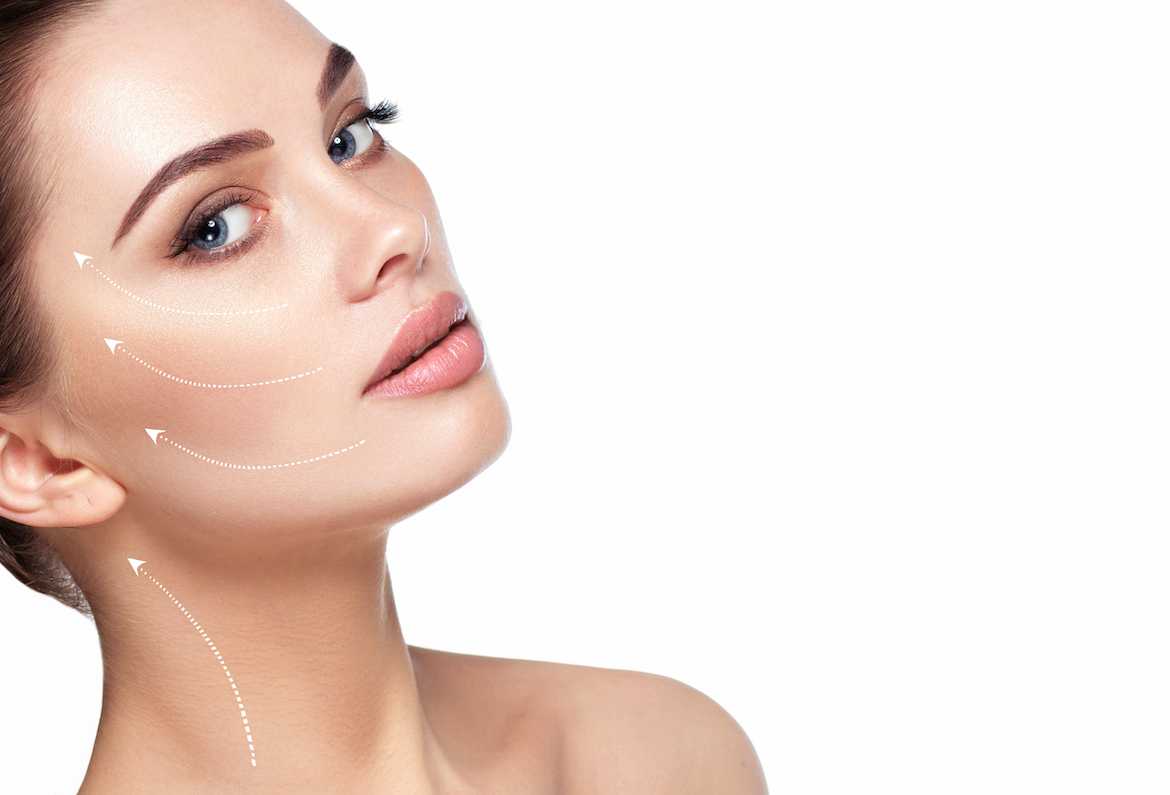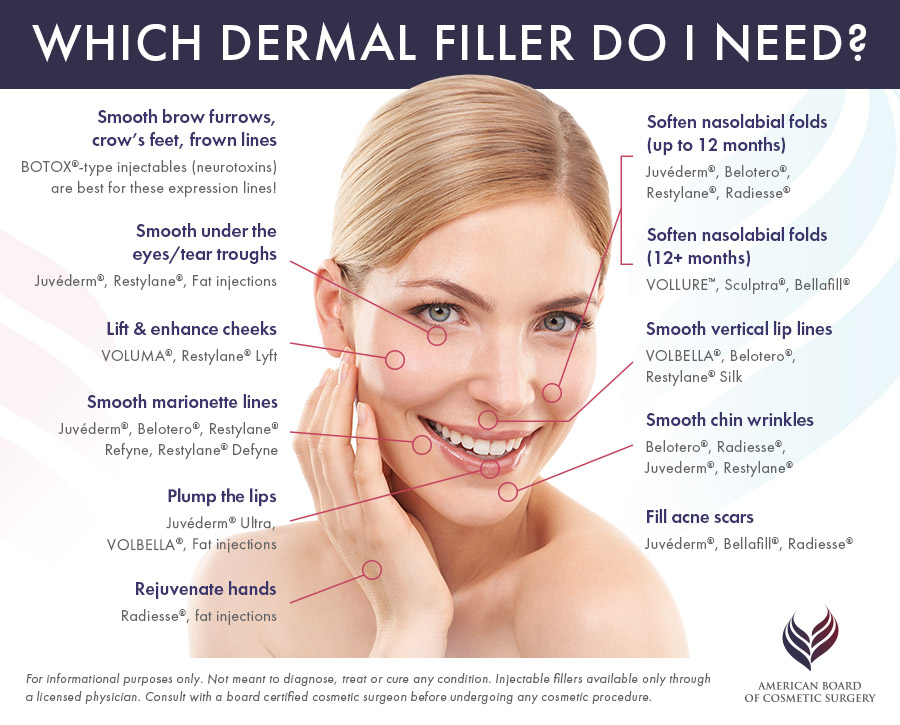Tips for Choosing Dermal Fillers

As we age, our faces develop fine lines and wrinkles and often furrows between the eyes and the lines from the nose to mouth. Many people think that Botox® is the answer to all of these changes in our faces. Botox® is very effective in removing the lines in the forehead, between and around the eyes, above the upper lip and on the neck. Botox® acts to stop or reduce the repeated muscle contractions in the face that create lines. By stopping these contractions, the lines are reduced and can be almost eliminated, with the full effects often being seen within six to 14 days. In 2016, the American Society of Plastic surgeons estimated that there were seven million treatments performed with Botox® and other related neurotoxins.
On the other hand, dermal fillers are designed to address the deeper lines and furrows that develop between the eyes (laugh lines) and from the nose to the edge of the mouth. These lines do not develop as a result of muscle contractions but rather as a consequence of the reduction of bone volume, fat, muscle tone and skin elasticity in the face and lips. With the loss of these elements, our faces actually shrink, with our cheeks flattening out, resulting in a sagging of the skin at the jaw line and the creation of the deep furrows often seen from the nose to mouth and between the eyes. Over two million people were reported to have received treatment with hyaluronic fillers in 2016.
Hyaluronic acid is a major component of the skin and contributes significantly to cell proliferation and migration. It is the moisture binding ingredient that keeps the skin plump and hydrated. Hyaluronic acid can attract up to 1000 times its weight in water. This is one of the main reasons that hyaluronic acid is used as a dermal filler. A filler does exactly what its name suggests – it provides volume to the face in the areas into which it is injected. Dermal fillers can add volume to the cheeks so that the lines from the nose to mouth soft and appear to disappear, as the cheeks move back out to their original size. This often also has the effect of reducing sagging skin and tightening the skin at the jaw line. Fillers can be used to plump the lips to increase the width and depth to their original size (or larger), overcoming the decline as we age. Acne damage (pock marks) may also be reduced with the use of a hyaluronic dermal filler. Finally, fillers have also been used to straighten of the line or shape of the nose.
There are a number of different hyaluronic filler brands available on the market. Brands like Juvederm, Restylane, Sculptura and Radiesse have formulas providing compounds that that have densities ranging from thin to thick. The medical provider will choose the filler that meets the objective that you have for providing volume to the various areas of your face. For example, Juvederm has three different formulas: (1) Voluma, the thickest that is often used to provide volume to the cheeks and can last for two years; (2) Juvederm Ultra Plus, a middle range thickness that is used to reduce deep wrinkles and lasts approximately one year and; (3) Juvederm Ultra, which is the thinnest formulation and is frequently used to plump the lips, last for less than a year. This can vary based on your lifestyle, metabolism and unique chemical makeup.
As hyaluronic acid is a naturally occurring compound in our bodies, it is completely safe when used as a dermal filler. There is rarely any downtime from receiving filler, although some slight bruising may occur. After care is simple and it is recommended that you avoid putting too much pressure on the treated area after the treatment. It is strongly recommended that you research the providers in the area and make sure that the treatment is performed by a licensed professional that has extensive experience in the selection of the right filler to meet your objectives.

